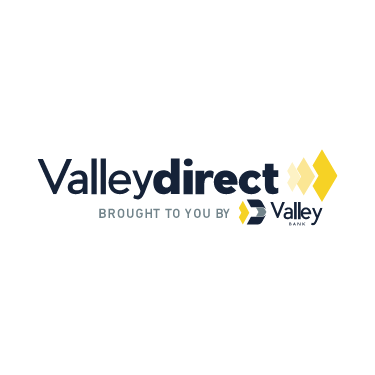A good savings account should be the backbone of your personal finance strategy. It’s important to find a provider that helps you grow your nest egg, but with so many options at your disposal, choosing the right one can be a challenge.
Between traditional brick-and-mortar banks, credit unions, online banks, and modern fintech companies; more options seem to pop up each day.
In this post, we’ve listed the best savings accounts available right now, from top high-yield savings accounts (HYSAs), to accounts for kids and more.
Best Savings Accounts for July 2025
Here are the top savings accounts right now:
- Discover® Bank Online Savings
- Ally Bank Online Savings
- Capital One 360 Performance Savings
- Alliant Credit Union High Rate Savings
- Axos Bank High Yield Savings
- Marcus by Goldman Sachs
- Synchrony High Yield Savings
- Chime High Yield Savings
- Chase First Banking
- Vio Bank High Yield Online Savings Account
1. Discover® Bank Online Savings
🏆 Best Overall
The Discover® Online Savings Account is another top option for those looking to avoid fees. In fact, there are no fees of any kind.
This means no monthly service fees, no insufficient funds fees, and even excessive transaction fees are nowhere to be found. What’s more, deposits earn well over the national average with an APY of 3.50%.
The top online savings account comes with mobile banking through Discover’s well-reviewed mobile banking app, where you can transfer money and check your balance whenever you need to.
Signing up online takes just a few minutes, and all you need is a residential address and a Social Security Number.
Learn More:
2. Ally Bank Online Savings 
🏆 Best For Buckets
Ally is one of the biggest and best-known online-only banks, and for a good reason.
The Ally Online Savings account is open to residents across all states in the US. There are no minimum deposit requirements, no monthly fees, and no fees for ACH transfers and incoming wire transfers.
Most importantly, the APY is currently 3.50%, making it one of the highest-earning accounts available. All balances earn interest at the same rate. Online Savings also comes with a savings tool called Buckets, which makes it easier to divide funds based on specific goals or expenses.
Online Savings also comes with a feature called Surprise Savings, which automatically analyzes your linked checking account and transfers any safe-to-save cash over to your savings account.
You can easily set up recurring transfers, and if you have an Ally Interest Checking account, you can use Round-Ups to round off your debit card purchases and drop the remainder into your savings.
Learn More:
3. Capital One 360 Performance Savings 
🏆 Best Free Savings Account
Capital One is a hybrid bank with a robust online platform and nearly 800 physical locations on the East Coast.
360 Performance Savings is the bank’s flagship savings account, and it’s one of the best you can find.
The top perks include no fees, no minimum balance requirements, and a 3.60% APY on deposits at the time of this writing.
Account access is online-only. Once you are signed up, you can use Capital One’s mobile app to track your savings progress, move money between accounts, set up automatic transfers, and make mobile check deposits.
Learn More:
- Read our full Capital One 360 Performance Savings review
- See all current Capital One Bank Promotions
4. Alliant Credit Union High Rate Savings 
🏆 Best Credit Union Savings Account
Alliant Credit Union tops our list of the best credit unions and serves residents of the Chicagoland area. If you prefer the community feel of a credit union, Alliant’s High Rate Savings account stands out for paying 3.10% APY on deposits.
You need to deposit just $5 to open an account and there is a minimum deposit requirement of $100 to earn interest.
High Rate Savings comes with a mobile and online banking experience, and you can easily make transfers to other Alliant or external bank accounts.
If you opt for eStatements, there are no monthly fees. There is a fee of $1 per month if you prefer paper statements.
As with most credit unions, Alliant accounts are protected by the NCUA, which is essentially the credit union version of the FDIC.
The biggest downside to Alliant is that it’s tough to qualify for.
Unlike most banks, which only require citizenship and an ID, you’ll need to meet one of the following requirements to bank with Alliant:
- Work at a member organization
- Have a relative who is a current Alliant member
- Live or work in the Chicago area near Alliant’s headquarters
Learn More:
5. Axos Bank High Yield Savings
🏆 Best High Yield Savings Account
Axos is an FDIC-insured online bank that offers personal and business banking solutions. Its high-yield savings account comes with an APY of up to 0.61%, giving Axos the title of the highest interest rate that we’ll cover in this post.
The high-interest rate is available for all balances, so savers at any income level can take advantage of compound interest that earns daily.
Depositors need at least $250 to fund an account initially, but there are no monthly minimum balance requirements after that.
Axos accounts don’t come with any monthly maintenance fees, and you’ll have access to a full suite of digital tools to help work toward your savings goals.
You can also get a free ATM card upon request, though ATM access is subject to Regulation D standards on savings account withdrawals.
If you’re interested in a more flexible but still high-earning option, check out Axos’ High Yield Money Market account, which comes with an APY of 0.25%.
Learn More:
6. Marcus by Goldman Sachs
🏆 Best for Same-Day External Transfers
Marcus is a high-yield online savings account backed by Goldman Sachs, one of the world’s largest financial institutions.
Named after Marcus Goldman, one of the bank’s founders, the account comes with no fees, no initial deposit requirements, and allows for same-day transfers of up to $100,000 to and from external accounts.
The current APY is 3.65%, and users have 24/7 account access online or through the Marcus app.
Marcus is FDIC-insured through Goldman Sachs Bank USA, so all of your deposits are covered for up to $250,000.
Learn More:
7. Synchrony Bank High Yield Savings
🏆 Best for Fee-Free ATM Access
Synchrony is an online bank that’s been in the business for more than 80 years and offers personal savings accounts, credit cards, and retirement accounts.
Synchrony Bank’s High Yield Savings account comes with an APY of 4.00%, plus an optional ATM card with access to Accel’s network of 400,000+ surcharge-free ATMs and $5 per month in ATM fee reimbursements if you go outside of its ATM network.
You can bank online from the Synchrony mobile app and make deposits through ACH transfer, mobile check deposit, direct deposit, or wire transfer.
Synchrony is a member-FDIC bank, so all of its accounts are protected.
Learn More:
8. Chime High Yield Savings Account
🏆 Best Neobank Savings Account
Chime is a fintech company that partners with the Bancorp Bank and Stride Bank to provide FDIC-insured online bank accounts.
The company was founded in 2013 and has since grown into one of the leading neobanks in the digital space, with 8 million account holders.
The Chime High Yield Savings account is a no-fee option that has no minimum opening deposit requirement and no maximums on interest earned, making it an excellent spot to park your cash.
Chime’s platform is entirely mobile, so all account maintenance comes from your smartphone or tablet.
You can set up recurring payday transfers with Save When I Get Paid, and Round-Ups send the remainder of your debit card purchases directly to your savings balance.
High-Yield Savings comes with a high APY of up to 3.75% on all balances, making it ten times higher than the average savings rate.
Learn More:
9. Chase First Banking
🏆 Best Savings Account for Kids
Opening a savings account for your kids is a great way to get them familiar with banking and establish building blocks toward a positive relationship with personal finance. The earlier you can instill budgeting and savings habits, the better.
Chase First Banking is a full-service banking product designed for kids and teens that covers the basics of both checking and savings.
The account aims to help parents teach their kids about finance by balancing control of the account with the freedom to learn about financial independence.
Chase First Banking is exclusively available to current Chase checking customers.
Through the Chase mobile app, kids will have access to three different account buckets — Spend, Save, and Earn. Spend comes with their own debit card, and you can set limits on how much your kids can spend or withdraw at ATMs.
With Earn, you can set up recurring allowance payments or send payments for things like one-time chores.
Save is built to mirror a traditional savings account and helps to instill positive habits by setting goals and tracking progress along the way. You can easily transfer money from your Chase accounts, and kids can move funds from their Spend or Earn buckets.
First Banking is a free account, and the only fees associated with it are for replacement debit cards and the use of a non-Chase ATM.
Learn More:
- Read our full Chase First Banking review
- Read our full Chase Bank review
- See all current Chase Bank Promotions
10. Vio Bank High Yield Online Savings Account
🏆 Best for Competitive Rates
Vio Bank is the online banking division of MidFirst Bank, one of the largest privately held banks in the US.
Vio’s online savings account offers a solid interest rate on all account balances, making it a top-tier account in terms of earning potential.
The account is FDIC-insured and requires an initial deposit of $100 to open.
Like most savings accounts, you can make up to 6 free withdrawals per statement cycle, and Vio doesn’t charge any monthly fees.
Other Top Savings Accounts
This list is by no means exhaustive, but with hundreds of bank savings accounts to consider, breaking it down to a select few can be challenging.
With that in mind, there are plenty of banks not mentioned in this post that could still serve you well with a quality savings account.
CIT Bank, American Express National Bank, and Citibank, just to name a few, all have products worth your attention.
To get a better sense of the savings options that are available, plus checking, certificates of deposit, and more check out our full list of bank reviews.
How to Choose the Best Savings Account
Now that you have an idea of the best of the best available right now, deciding on a new account should feel a little easier. If you still need some help narrowing it down, here are some additional tips on how to choose a bank.
When it boils down to it, picking the right one comes down to a couple of basic considerations.
APY
The first thing to think about is how much you stand to earn. The higher your APY, the faster you’ll see your balance grow.
When it comes to savings accounts, annual percentage yield (APY) is the name of the game. Your APY is the amount of interest the bank pays you (if the account offers APY earnings).
Basically, it’s free money just for keeping cash in your account, and it’s calculated based on the amount of your deposits.
Interest is typically compounded daily and paid out monthly, and the average rate for an American bank account is right around 0.05%, though this is definitely well below what you can expect to get with HYSAs.
Savings account interest rates are loosely related to the Federal Reserve, more commonly known as the Fed, which is the US central bank that controls the overall cost of borrowing money through the Federal Funds Rate.
Fees
Even if you have an account with a great APY, excessive fees can quickly cut into your earnings.
Monthly maintenance fees, low balance fees, and overdraft protection fees can add up if you aren’t careful, so it’s important to understand all of the fees associated with any account.
This isn’t to say that you need to avoid accounts with fees entirely — the right account for you might come with some. The key is to find an account where the fees are avoidable.
For example, suppose you open a savings account that requires a minimum balance requirement of $25,000 to avoid a $25 monthly fee. Each month, you need to be sure that you maintain consistently maintain that high balance.
Traditional vs. Online
The banking industry as a whole is currently at a crossroads between traditional and modern platforms.
While big, traditional banks still control a huge majority of deposits, online banks and fintech companies continue to gain momentum as services across all industries increasingly go digital.
That said, each form of banking comes with its own set of pros and cons. Generally speaking, online banks tend to have higher APY rates and lower fees, while traditional banks add value through a wider range of banking products and in-person customer support.
Particularly for savings accounts, higher yield options are typically more readily available online.
However, the growing popularity of digital banks has already pushed some of the big banks to increase their bottom-of-the-barrel APY rates.
FDIC Insurance
Most banks are insured by the Federal Deposit Insurance Corporation (FDIC), which protects your deposits if a bank fails and isn’t able to cover them. The maximum coverage is $250,000 per depositor.
FDIC insurance is essential with any bank account, and it should come as a serious red flag if you’re considering a financial institution that isn’t member-FDIC itself or associated with a bank that is.
Frequently Asked Questions
What banks have the best interest rates on savings accounts?
Generally speaking, the best interest rates available today are found within the online banking community.
This is because online banks, due to the lack of physical spaces and fewer employees, have significantly less overhead to worry about. These reduced costs are usually passed on to customers through higher APYs and lower fees.
As for the top APYs available right now, Vio Bank and Axos Bank are currently the top-paying. However, this can change quickly as interest rates tend to fluctuate based on how a given bank is doing and which direction the Fed is trending.
Remember that while one bank might boast the highest APY at one point, the situation can change in a matter of months or weeks.
How much interest will I get on $1000 a year in a savings account?
It completely depends on the APY that the bank pays. It’s difficult to get an exact estimate because interest rates fluctuate throughout a given year, but let’s go with Ally Bank as an example.
Suppose you deposit $1,000 into a high yield savings account with an APY of 0.50%. You can expect to earn about $5 in interest annually if your balance stays the same for the entire year.
It may not seem like a lot, but as your savings balance grows, so does your return on interest. For example, at the same 0.50% APY, a $10,000 balance earns around $50 each year, and a $100,000 balance earns around $500.
Can I have multiple savings accounts?
The short answer is yes — you can open more than one savings account, and there are no legal restrictions against doing this. But the question you should be asking is, what value is each account adding?
Keeping your savings in one place helps keep things organized, and your interest earnings will be more consistent and profitable if you focus on growing the balance in a single, high-earning account.
That said, there are valid reasons to hold multiple accounts. For example, you might want an additional account for a child or dependent, or you might want to keep your emergency fund separate from your main account. It all comes down to your personal preference.
Can you lose money in a savings account?
This is a great question that tends to come up often with high-yield accounts because it seems like there should be some risk involved when you’re earning seemingly free money.
The short answer is no. Savings accounts aren’t like investment accounts, which are subject to market volatility and rise and fall based on market conditions. Interest rates can certainly drop, which will leave you earning at a slower rate than you were before, but your balance won’t start moving in a negative direction.
However, if your bank charges a monthly service fee — and unfortunately, many big national banks do — you are technically losing money when the bank deducts these fees from your account. You’ll also want to be sure to maintain a positive account balance. If you overdraw the account, for example, you can lose money due to overdraft fees.
Furthermore, like any business, banks can fail at any time, which makes choosing an institution that’s insured by the FDIC or NCUA a necessity.
Are online banks better than traditional banks?
There’s a growing perception that the masses are ditching the old guard for more modern banking solutions. While it’s true that online-only banks are experiencing rapid growth, the reality is that traditional banking still dominates the industry overall.
Both traditional and online banks have value in their own ways, and which is better is up to you. It’s a matter of understanding what sort of banking experience you’re looking for, based on the pros and cons that come with either option.
Online banks usually have low fees and high rates but don’t have in-person support or wide-ranging account options. On the other hand, traditional banks have name brand recognition and a nationwide presence, but they also tend to nickel and dime you with fees and offer very little interest.
It’s worth looking into both types of banks and figuring out which one lines up with your needs and financial goals. There are fantastic accounts within both types of banks, but the best one for you completely depends on what you’re looking for.






Comments are closed.
Comments are closed here.